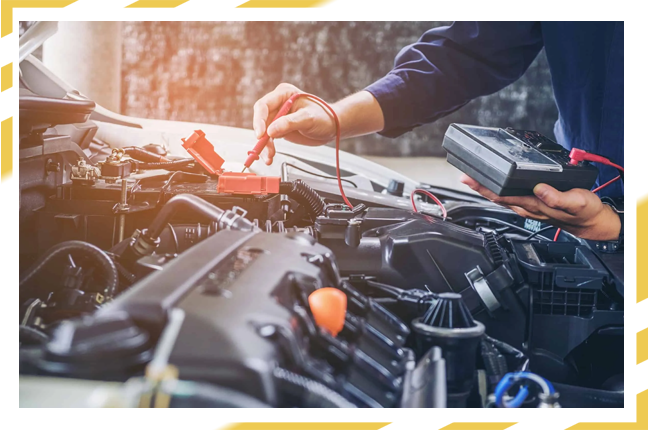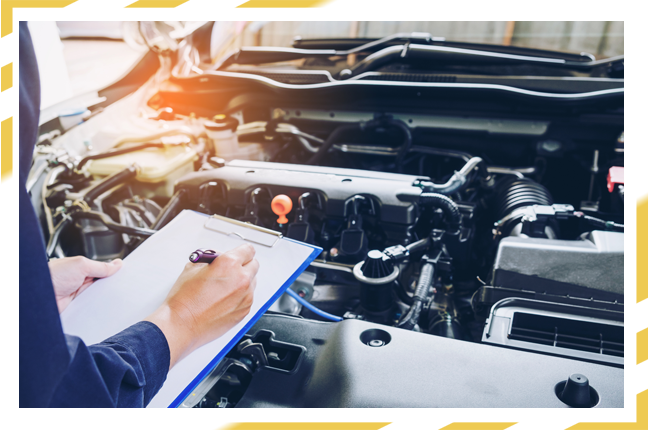
Car Battery Replacement Service
What do we need car batteries? How do car batteries work?
Car batteries are an energy storage unit that depends on chemical synthesis, taking place within the battery and driving electricity. The electrical energy gets used to run the ignition system, starter motor, and fuelling system on your auto.
As your car’s motor starts running, the alternator provides the electricity required for running all vehicles. It charges the car’s battery and restores the electric form of energy used to start a car. When do you need to replace the battery of the car?
Isn’t your car starting?
When bought, the battery of the car has a definite capacity to drive power.
It gets called the current rating of the charger.
As time passes, the amperage rating that a car’s battery supply gets lower than its actual rating.
If the cranking amps fall below a definite threshold, it will be hard or impossible to start your motor.
The charging system or battery warning light gets illumed. Should a charging system or battery get its warning light illuminate, a car mechanic performs a couple of tests.
He does so to determine whether you need a battery replacement or not. Electrical components of the battery fail to perform. If the electrical components of the battery fail to work, and the voltage of the car’s battery drops, electrical components of the car malfunction. For instance, it strikes the security system. If you experience malfunctions, it’s wise to get the battery tested.
Why do mechanics install and replace a car’s battery?
A car mechanic may install the battery to avoid the risk of losing preset radio settings. It saves you from losing the stored data as the battery drains out. When the car’s battery is dead, you need to take this measure.
The negative cable of your auto gets removed from the battery. Removal of the negative cable gets followed by the positive end. The tie-down system of the car’s battery gets loosened and the mechanic removes the old battery.
The mechanic inspects cable ends and wiring to make sure that it is clean and free of corrosion. In places where extreme corrosion takes place, the cable should get replaced. The mechanics need to get the wiring repaired.


The new battery gets installed and the tie-down system of the battery gets reinstalled. The anti-corrosion element of the car gets applied to the terminals of the car’s battery. The positive terminal gets reconnected after connecting the negative terminal.
Models of VW, BMW, and Audi, may need PCM tuning to fix the parameters of the battery. This step gets performed via a specific scan tool. It is essential to enhance the battery life. It helps prevent malfunctions of the electrical system.
The car gets started and the output of the charging system gets measured. It gets compared against the OEM specs to ensure that the new battery gets charged. In general, the output of the battery will lie somewhere in the scope of 13.9 to 14.9 volts.
It is worth noting that the exact specs of the charging output will rely on the manufacturing unit and model.


Can you drive a car with a battery problem?
Yes, you can drive a car with a battery problem. But, if you’ve got a weak battery, you might get left behind somewhere.
If the battery dies, you won’t be able to start your motor. A fault-prone battery will get the alternator overloaded. It adversely affects the performance of the car’s electrical element, including the security system and the interlock shift of the car.
What do you need to keep in mind when replacing the battery?
The quality of the electrical elements to the car’s battery is essential. In addition, you need clean connections. It should be free of corrosion and get properly tightened.
Batteries preserve an immense amount of energy.
If a battery gets short-circuited, it could explode and create constant discharges to damage your vision.
Be sure to use Insulated tools to attach the cables to battery terminals. Else, the positive wiring of the battery gets shorted to the ground. The negative and positive posts get shorted.
Batteries get safely plugged from a terminal to the positive wiring. Wiring connects the ground with the negative terminal. If the polarity gets reversed, the vehicle’s electrical system gets damaged.
The battery of the car has a service life ranging from five to seven years.
The load test on a car’s battery results in a reduction in the loading capacity of the car’s battery to generate power.
Further, you buy a new car battery rather than wait for the old battery to fail.
Batteries should get disconnected when the car’s engine is off.
Besides, it gets disconnected when the alternator stops running.
If you disconnect a battery when the alternator is running, it can cause a voltage spike. It will cause damage to the electronic components in the car, including the PCM.
